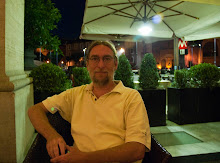Friday, March 26
Today will be a two-museum day – the Louvre in the morning and the Musee National du Moyen Age (National Museum of the Middle Ages) that is in the Thermes de Cluny, in the afternoon.
I arrive at the Louvre to find a huge queue waiting to get in. The museum should have opened half an hour ago, so this is not a good sign. I go to the member’s only queue and quickly get thru security. Upon meeting up with Dr. Hunt, we learn that the museum staff is discussing a strike and is delaying anyone from getting into the museum until a decision is made. An hour after the scheduled opening time the staff begins to allow visitors in but is engaging in delaying tactics preventing visitors from getting into the actual galleries. (What this accomplishes, beyond annoying the visitors, is not clear.) Slowly we make our way to today’s galleries. The bright side to all this is that when we do reach our destinations, the galleries are nearly empty and we can have our discussions in peace.
Slowly we make our way to today’s galleries. The bright side to all this is that when we do reach our destinations, the galleries are nearly empty and we can have our discussions in peace.
We will spend the morning with post Renaissance painters from the Low Countries. We start with a gallery of huge paintings by Ruben’s studio. Dr. Hunt tells us that Rubens didn’t actually paint most of these. Instead, he would draw small sketches (a couple of square feet in size) and then turn the work over to his staff. Sometimes he would finish faces or other important details. He was a very accomplished diplomat and historian (a favorite theme). He was also very wealthy and he and Rembrandt had a passionate hatred for each other. His paintings are so full of references that you can’t tell who’s who without a scorecard! (Sorry, couldn’t resist!)
Next, on to Rembrandt. I have to admit I have never been a big fan of Rembrandt. Although his use of light on faces was brilliant he would paint the vast majority of his canvases very dark. Dr. Hunt has a great time in telling the story behind “Bethsabee at Her Bath”.
We spend the rest of the morning looking at stuff that does nothing for me until we get to one painting by Jerome Bosch. Now this guy was out there and I like it! I will have to look him up when I get home.
In the afternoon, we move on to the Cluny. I am excited to see this one, as I have never been in it. More importantly, it is in the Roman Bath from when Paris (then called Lutetia [in Latin] or Lucete [in modern French]) was a part of the Roman Empire. Hey, I can’t go on a trip without visiting some Romans!
We see some beautiful stained glass from 1200 CE to about 1500 CE. Then a lot of religiously themed objects, including relic containers, which while showing great craftsmanship, served a purpose of (in my opinion) of desecrating the message of Christ.
In the old bath, there are a number of statues without their heads. These used to represent the Kings of France until the Revolution when the Kings got their just desserts.
And finally, the museum’s masterpieces – The  Lady and the Unicorn Tapestries, from 1482. They are huge, probably 15 feet by 12 feet and in remarkable condition. This is one of those times you are really glad to be with Dr. Hunt as his lecture about them brings the themes to life better than I ever could trying to figure them out on my own.
Lady and the Unicorn Tapestries, from 1482. They are huge, probably 15 feet by 12 feet and in remarkable condition. This is one of those times you are really glad to be with Dr. Hunt as his lecture about them brings the themes to life better than I ever could trying to figure them out on my own.

No comments:
Post a Comment